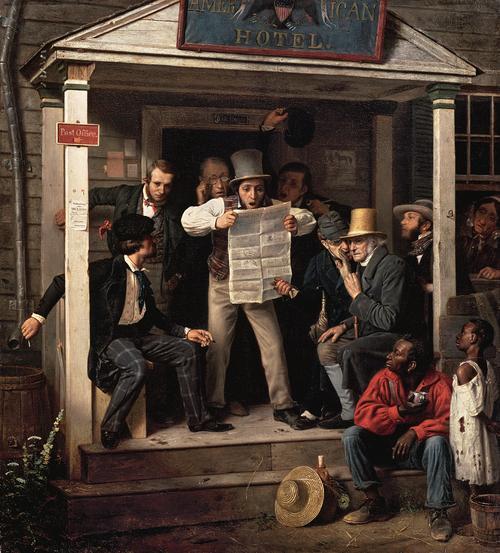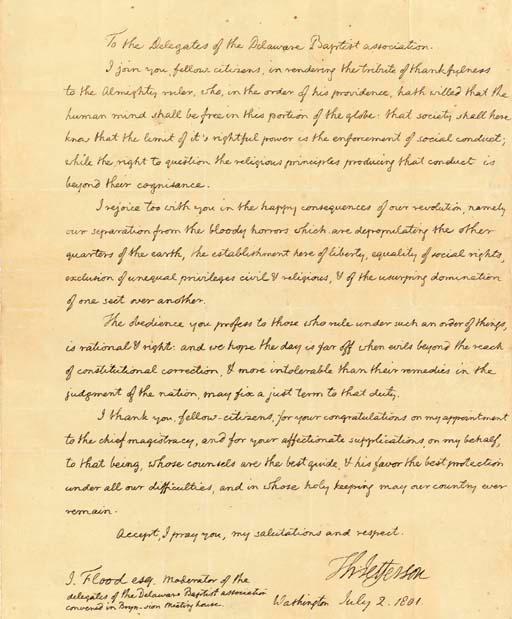A minister friend of mine once told me that the successful formula for a sermon required that the preacher begin and end with no more than three points, and that they be made as quickly and as forcefully as possible in less than half an hour.
The excellent Knight Commission report on the Information Needs of Communities follows the formula of three main objectives in its foreword to Informing Communities Sustaining Democracy in the Digital Age:
1. Articulate the information needs of a community in a democracy,
2. Describe the state of things in the United States, and
3. Propose public policy directions that would help lead us from where we are today to where we ought to be.
I ask your indulgence to permit me to outline briefly five elements of institutional and public policy with regard to digital archives that are critical to sustaining the information needs of a community in a democracy. I propose to do so, however within the time allotted which is considerably less than 30 minutes.
Before I address the five points, allow me to circulate two images that address in greater or lesser degree all five points. The first is an exceptional painting by Richard Caton Woodville which is currently included in an exhibit at the Metropolitan Museum of Art, entitled American Scenes of Every Day Life, 1840-1910. Woodville painted this scene in Baltimore, Maryland, and it became one of the more popular reproduced graphics of its day.

The original is owned by a museum in Arkansas, which I assume because of its inclusion in the Metropolitan exhibit receives a gratis condition report and any necessary conservation for permission to include it on display.
Richard Caton Woodville (American, 1825–1855)War News from Mexico, 1848Oil on canvas; 27 x 25 in. (68.6 x 63.5 cm)Crystal Bridges Museum of American Art, Bentonville, Arkansas
Reproducing this image in any format other than as it is presented here, hyperlinked to source, requires payment of a permissions fee, and it is uncertain how long both the hyperlinked references above (one of which does not include the Woodville painting from the exhibit) is uncertain. It is one of the best ways to graphically convey the concept of Informing Communities in the middle of the nineteenth century, yet the understandable barriers to it use are expensive. The owners of the painting deserve support for its care and conservation and the authors of the exhibit text and interpretation as evidenced in their superb publication as currently available through Amazon for $37.80, deserve their royalties if similar books are to continue to be available:
If we are to sustain Democracy in the Digital Age, there is a critical need for good graphics and dependable information to be inexpensively and readily available in electronic form for educational purposes. This means that the critical and expository skills of historians, archivists, librarians, and educators generally need to be widely and freely available on the web through authoritative, accountable, and persistently (permanently) available electronic form (which in today's world, means the world wide web).
The second graphic is a neglected letter of Thomas Jefferson's. That is not to mean that its text is unknown, or for that matter not available in superbly edited form by the Jefferson Papers project at Yale. Jefferson's own, barely legible copy is on line at the Library of Congress, while Barbara Oberg presents the letter in volume 34 of the Papers of Thomas Jefferson published in 2007, now available from Princeton University Press for $110 or used on Amazon for $46.98. The footnote on p. 459 is both helpful and illuminating about the history of the letter, pointing to the Christie's sale where the document sold for $228,000n for the benefit of a house restoration where it was discovered. Apart from the fact that a teacher would have to go to a library or pay the tariff on purchase to read the footnote, what the footnote does not do is lead you to the original (now privately owned and not publicly accessible) or explain the context of where it was found. When I was asked to authenticate the letter, I addressed the context in which the original was found, which proved to be the papers of the editor of the Wilmington, Delaware, Mirror of the Times, James Wilson. That context remains behind and off line at the house museum, while the details of my research and his own able studies remain with the Chrisitie's document expert, Chris Coover, who wrote a very good, descriptive catalog entry for the sale (lot 485, Sale 1677).
My first point with regard to this letter is that the letter and all of the context work that went into its sale should be available on line at little or no expense to the educator and student, linked through the careful editorial work undertaken by Barbara Oberg and her staff. That means that anyone wishing to to pursue the nearly 250 papers which were published in 1801 in order to assess its distribution, could do so at little expense. At present the originating newspaper is not available on line (apparently the only copies exist on film at the University of Delaware Library), and if it were, the cost of accessing it by the teacher or student, would be prohibitive.
My second point is that there needs to be an on line audit trail from analysis to documentation that permits the educator/communicator and student to examine the images of the original sources, where they need to be accompanied by an easy to use system of user transcription and adding value to the understanding of the original.

Source: Christie's catalogue
For example, the trail to this letter should lead from the editorial work of the Jefferson papers to on line images of this original and Jefferson's copy, which in turn should allow user input with regard to further explaining context, content, and additional links to explanatory studies. A prototype of what I mean is on line as http://editonline.us, which is a wikipedia like approach to on line access and editing of documents. I do not yet have the owner's permission to place this particular document on line as an example, but what you might find there with the image of the original, would be something like the following, attached as a note to the letter, which was my suggestion for further research in 2002 when I was first asked to authenticate the document, updated when I returned to it for this conference:
This letter of Jefferson, the only one extant that he wrote on July 2, 1801, a day he felt ought to be the day celebrating the adoption of his Declaration of Independence, offers a number of possible avenues of further investigation in the context of a bitterly fought election and constitutional resolution . For example Jefferson appears to clearly articulate his ideas of separation of church and State more forcefully than his later letter to the Danbury Baptists, including the careful wording “The obedience you profess to those who rule under such an order of things [outlined in the previous paragraph] is rational & right and we hope the day is”far off when evils beyond the reach of constitutional correction, & more intolerable than their remedies in the judgment of the nation, may fix a just term to that duty.” It is important to know the intended audience (how widely distributed was the letter in the press of the day?), and to understand it in the context of how Jefferson communicated his views and ideas to the public. A sampling of the papers now in the Readex/American Antiquarian Society index (as of 11/2009) indicates at least 9 newspapers carried the letters to and from Jefferson. It appears probable that Jefferson, who responded quite promptly to the letter from the Delaware Baptists of June 26th, intended it for publication. Why it took to September 9, is a puzzle, as is the question of its ultimate distribution for the reading/listening public, one which further research through the auspices of the Jefferson Portal, may prove instructive, assuming that all the necessary resources to do so are readily accessible there, as is the intent of the Portal. (Ed Papenfuse, Maryland State Archivist, 2002, revised 11/2009)
Recommendation 6: Integrate digital and media literacy as critical elements for education at all levels through collaboration among federal, state, and local education officials.
Recommendation 7: Fund and support public libraries and other community institutions as centers of digital and media training, especially for adults.
[to which I would like to amend, clearly identifying Public Archives and as an additional critical constituency of the first importance to read:
Fund and support public archives and public libraries, along with other community institutions as centers of digital and media training, for children and adults.]
The five points are:
the establishment of authoritative, reliable, and permanent conduits that lead from exposition to dynamic editing/annotating/transcription compliments to original sources
comprehensive understanding of the nature, extent, quality of original sources. For example, the work of Clarence Brigham on Early American Newspapers as incorporated into such authoritative sites as the Maryland News Paper Project, need to be readily available on line as context for Newspaper research in the Early Republic. Brigham, which is not on line, appears to be the only available resource for puzzling out what newspapers Jefferson's letter to the Delaware Baptists may have been published, although any and all newspapers for the period published in Maryland can be understood through the Maryland Newspaper project which is on line, although not easily accessible by such on line indexing services by Google because its managing database is not open to outside spiders.
Ease of/inexpensive means of access to information using the World Wide Web
ability to gather authoritative leads and answer on line, easily, in the context of the user being able to add value to the understanding of the identified sources. This requires a managed editorial apparatus similar to Wikipedia which provides a community managed filter for ill informed and maliciously intended annotation.
Sustainability/affordability of the electronic sources of information for the community which would include a shared, distributed means of supporting resources to such neglected fonts of basic data as public archives and libraries.
In all, the underlying questions are: Who does it? Who pays for it?, in the context of a cooperative distributive network not unlike what Google has created for itself in which a wide variety of portals focused on an informed process of qualitative analysis where community questions of any nature are met with informed directions to answers that include an audit trail leading to the ongoing effort to place reliable and authentic documentary resources on line.
Ed Papenfuse
Maryland State Archvist
Friday, November 6, 2009
Jefferson Institute Conference at Monticello
on Digital Tools for Information and Democracy

No comments:
Post a Comment